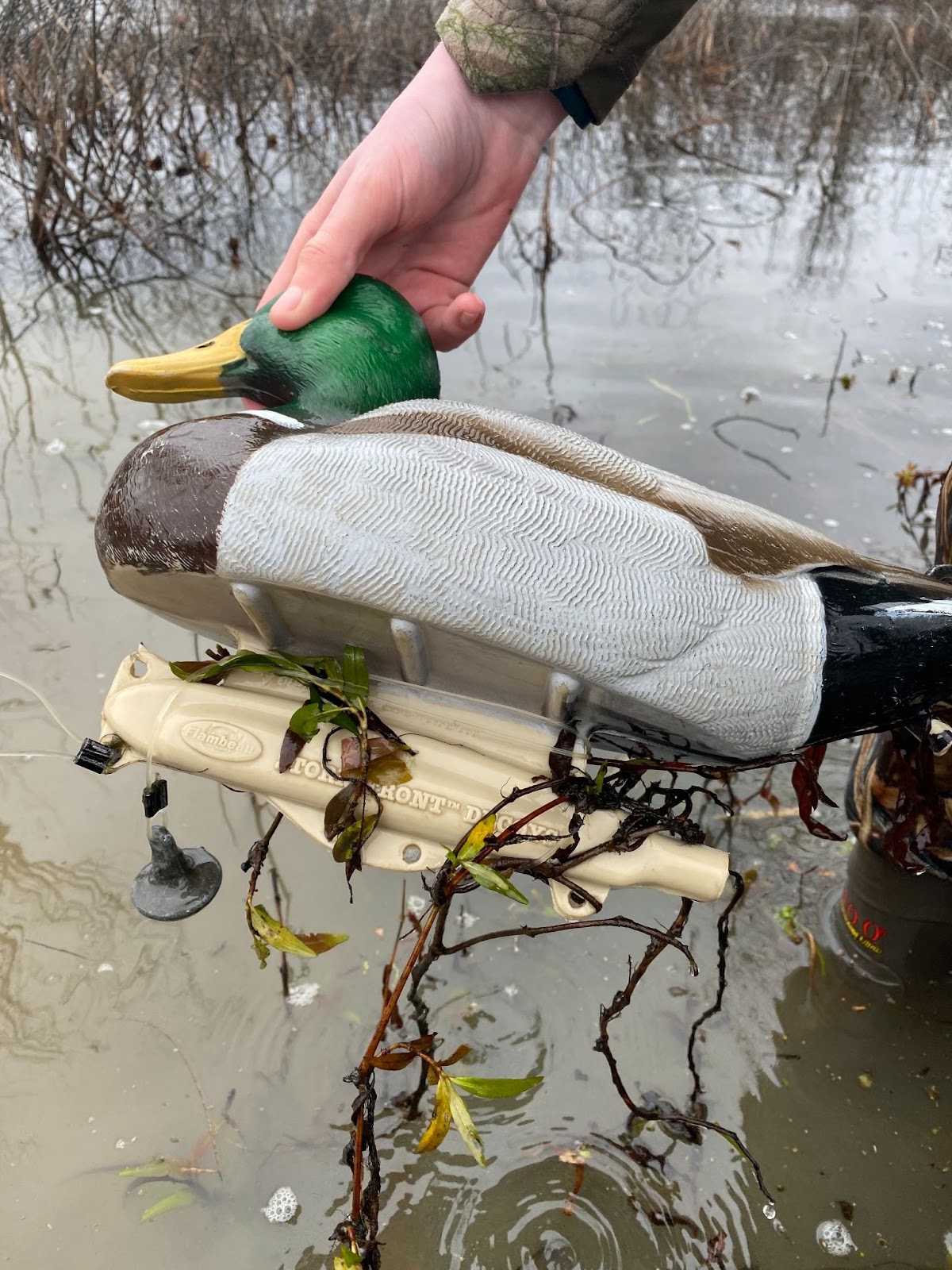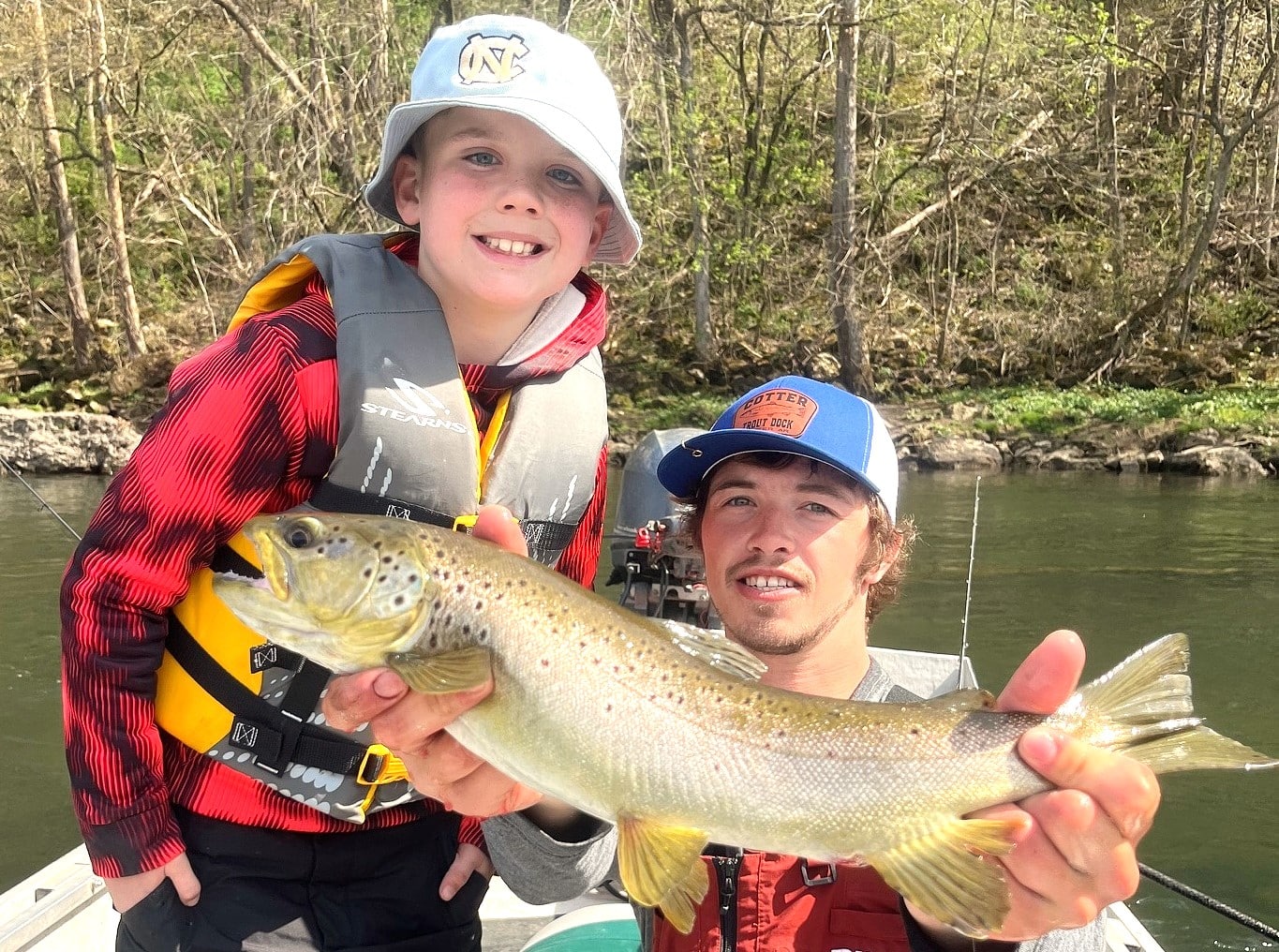Leave invasive species in your wake this hunting season
ON 12-11-2024

LITTLE ROCK – As water begins to accumulate in public duck hunting areas throughout Arkansas, hunters are starting to scramble to find the water and the ducks. Hunters can help keep Arkansas’s lakes and rivers healthy by taking a few moments at the end of each hunting day to inspect their boats, trailers and hunting equipment for vegetation and other stowaways that could spread to new areas and destroy wildlife habitat.
Arkansas fishermen have heard the mantra “Clean, Drain and Dry” for years, but anglers aren’t the only boaters in Arkansas that can do their part. Waterfowl hunters’ boats likely spend just as much, if not more, time in flooded vegetation and muddy areas where invasive plants such as giant salvinia and water hyacinth lurk. Before leaving the boat ramp for home or a new hunting destination, always inspect your gear and remove any vegetation or debris, and make sure your boat plug is pulled and allowed to drain. That way any invasive species that may exist on the area won’t be transported to new locations.
Matt Horton, Aquatic Nuisance Species Program coordinator for the AGFC, says harmful plants like giant salvinia, water hyacinth and Cuban bulrush can be easily transported as plant fragments or seeds clinging to decoys, decoy bags, boats, trailers and even in the mud clinging to waders. Also, small plant fragments and seeds, as well as invasive mussels and snails can survive in small amounts of water found in boat hulls, livewells and bilge areas.

“Preventing the spread of invasive species is the best way to fight them,” Horton said. “Once they become established, fighting them can be a full-time job and take away manpower and resources from other important fish and wildlife management work that needs to be done.”
Hunters can help prevent the spread of aquatic nuisance species by following the three-step process of clean, drain and dry anytime they move to new water:
-
Clean all equipment – Remove all plants and pieces of vegetation, seeds and mud off your waders, decoys, blind, truck, boat and trailer, and wash all equipment and gear with a high-pressure washer.
-
Drain your boat – Drain all water by removing all drain plugs from your boat when you leave the boat ramp.
-
Dry – Let all gear dry, preferably for five days, before visiting new waters. If there isn’t enough time to air dry between trips, use a towel to wipe dry remaining wet surfaces.
Horton also reminds anyone using a boat that, according to the AGFC’s Code of Regulations, all drain plugs must be removed at the boat ramp when leaving a body of water and during transport, including those in live wells and bilge areas, where invasive species may lurk.
A list of aquatic nuisance species found in Arkansas is available at www.agfc.com/ans as well as an easy-to-use online reporting form to report aquatic invasive plants and animals as hunters and other outdoors enthusiasts find them. Take a clear picture of the organism and note the location (GPS location preferred) to help AGFC identify and quickly respond to contain and eradicate new introductions before they spread or become established.
New invasive species introductions continue to increase in Arkansas. Just this year, early reporting helped AGFC eradicate two introductions of giant salvinia in the Illinois Bayou and Clear Lake and water hyacinth and Cuban bulrush in Lake Georgia Pacific. Also, Cuban bulrush was detected for the first time in Millwood Lake, Pool 2 of the Arkansas River, as well as Lake Erling and Felsenthal National Wildlife Refuge. The Arkansas Department of Agriculture responded to eradicate Purple Loosestrife at Lake Bentonville, which hasn’t been observed in Arkansas for over a decade.
“We are all responsible for being good stewards of our natural resources. Just like we need hunters and anglers to clean, drain and dry their boats and equipment, we need them to be on the lookout and speak up if they see what they think is an invasive species,” Horton said. “The faster we can act to contain and remove an infestation, the better our chances are of keeping these invaders at bay and keeping aquatic habitat healthy for fish and waterfowl.”
####
Recent News
Subscribe to Our Weekly Newsletter E-mails
Don’t miss another issue. Sign up now to receive the AGFC Wildlife Weekly Newsletter in your mailbox every Wednesday afternoon (Waterfowl Reports are published weekly during waterfowl season and periodically outside the season). Fishing Reports arrive on Thursdays. Fill in the following fields and hit submit. Thanks, and welcome!


